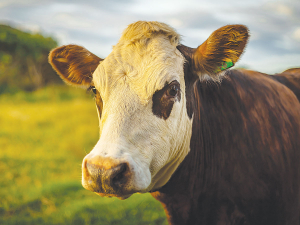Farmer confidence dips slightly, but positivity still dominates
Farmer confidence has taken a slight dip according to the final Rabobank rural confidence survey for the year.
 NZ beef production in 2024 is expected to fall around 3% because of ongoing contraction in dairy and beef herds.
NZ beef production in 2024 is expected to fall around 3% because of ongoing contraction in dairy and beef herds.
There's a glimmer of hope that NZ red meat producers will have a better year in 2024, despite Rabobank's most recent annual Global Animal Protein Production Outlook report predicting a slowdown or decline across some protein types this year.
Rabobank global strategist animal protein Justin Sherrard says NZ beef production for 2024 is expected to fall around 3% because of ongoing contraction in dairy and beef herds.
"[However] the contraction in the US beef production system should support beef export prices and, in turn, cattle prices," he explains. "While increased Australian volumes will keep prices competitive. We believe a lift in US import demand should see New Zealand cattle prices trade slightly above the five-year average through 2024."
Meanwhile, improving ewe numbers and breeding conditions are expected to lead to higher lamb numbers and an increase in sheepmeat production and exportable lamb volumes in 2024.
While 2023 had seen softer than expected global demand combined with higher Australian volumes, Sherrard believes there will be a gradual improvement in global markets in 2024 with slightly stronger prices, although ongoing large volumes from Australia will still limit upside.
"With forecast beef and lamb production close to the five-year average, New Zealand producers will be looking for an increase in global demand to support livestock prices."
The report says ongoing pressure - particularly environmental - on New Zealand's livestock industries will continue in 2024 and prevent any major production growth.
It also says producers and processors will need to adapt to sustain success amid tight margins. With higher production costs, adverse weather and tighter supplies is expected to push animal protein prices up.
However, a constraint in global consumption may lead to pressure on processors to invest in upgrading production systems to serve emerging market needs, meet regulatory requirements and cater to changing consumer preferences around sustainability.
The report also points to demographic shifts that will see the labour market tighten and raise production costs, while reduced population growth will slow consumption. Production in the major markets is forecast to grow 600,000 tons to a total of 247 million tons next year, compared to a 2.1M ton growth in 2023.
Sherrard says it was a testament to the resilience and flexibility of companies along animal protein supply chains that they continue to grow production and deliver on customers' demands amid such challenging market conditions.
Legal controls on the movement of fruits and vegetables are now in place in Auckland’s Mt Roskill suburb, says Biosecurity New Zealand Commissioner North Mike Inglis.
Arable growers worried that some weeds in their crops may have developed herbicide resistance can now get the suspected plants tested for free.
Fruit growers and exporters are worried following the discovery of a male Queensland fruit fly in Auckland this week.
Dairy prices have jumped in the overnight Global Dairy Trade (GDT) auction, breaking a five-month negative streak.
Alliance Group chief executive Willie Wiese is leaving the company after three years in the role.
A booklet produced in 2025 by the Rotoiti 15 trust, Department of Conservation and Scion – now part of the Bioeconomy Science Institute – aims to help people identify insect pests and diseases.

OPINION: The release of the Natural Environment Bill and Planning Bill to replace the Resource Management Act is a red-letter day…
OPINION: Federated Farmers has launched a new campaign, swapping ‘The Twelve Days of Christmas’ for ‘The Twelve Pests of Christmas’ to…